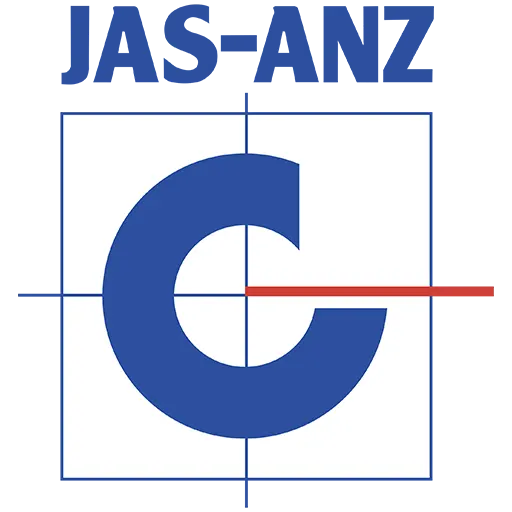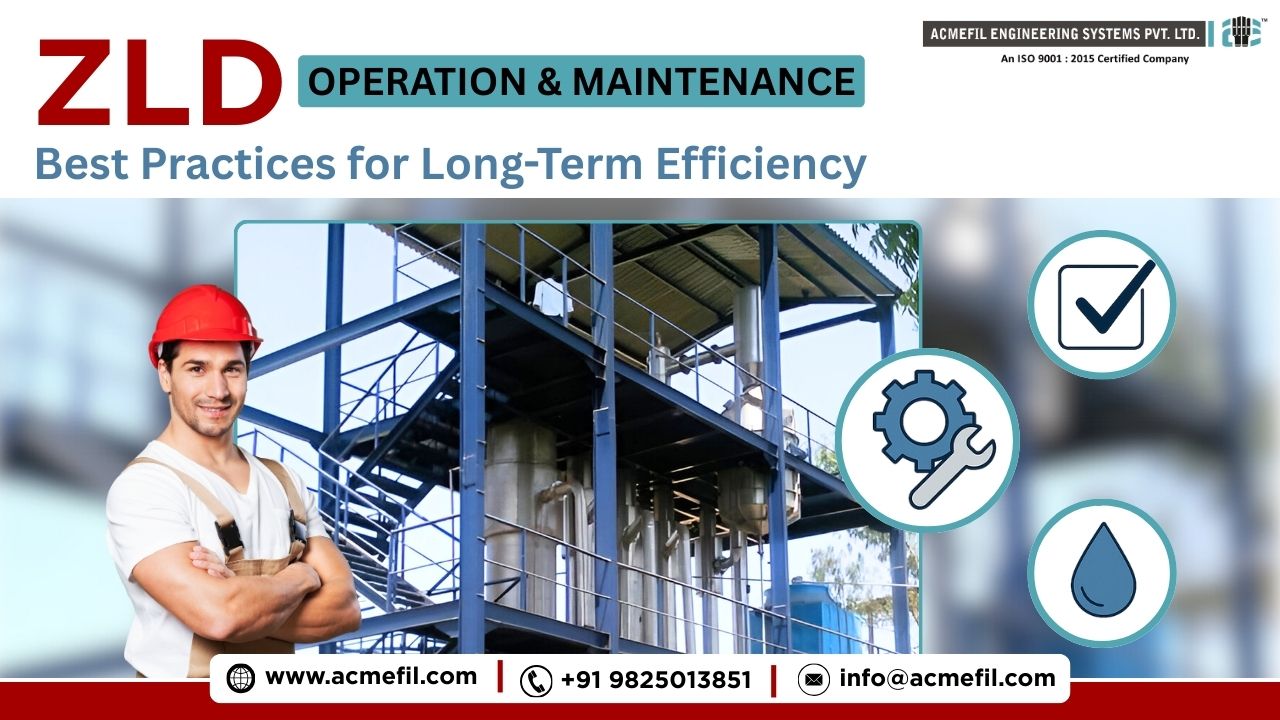Zero Liquid Discharge (ZLD) systems are changing how industries manage wastewater. As environmental regulations tighten and water scarcity intensifies, industries are under immense pressure to reuse every drop of water they consume. Operating and maintaining ZLD systems efficiently is no longer optional—it’s critical for survival, sustainability, and compliance.
If you are looking for an actionable, easy-to-understand guide on Operating and Maintaining ZLD: Best Practices, you are in the right place. In this detailed post, you’ll learn exactly how to maximize your ZLD performance, avoid costly breakdowns, and achieve long-term efficiency.
Let’s dive right in.
What is Zero Liquid Discharge (ZLD)?
Zero Liquid Discharge (ZLD) is a water treatment process that ensures that no liquid waste leaves the boundaries of a facility. Instead, it recycles, reuses, or crystallizes the wastewater into solid waste, minimizing environmental pollution and conserving water.
The process typically involves advanced filtration systems, evaporators, concentrators, and crystallizers that work together to separate clean water from contaminants.
Why Efficient Operation and Maintenance Matter in ZLD Systems
Operating a ZLD system without following best practices is like running a car without changing the oil—you might get by for a while, but eventually, performance deteriorates, and the system fails. Here’s why it matters:
- Ensures Consistent Compliance: Meet strict environmental regulations without fear of penalties.
- Reduces Operational Costs: Proper maintenance minimizes breakdowns and costly repairs.
- Maximizes System Lifespan: Regular checks and care extend the life of expensive equipment.
- Improves Water Recovery Rates: Optimized systems achieve higher efficiency, recovering more reusable water.
- Enhances Sustainability Goals: Achieve zero liquid discharge with minimal energy and resource consumption.
Operating ZLD Systems: Best Practices
1. Understand Your Feedwater Characteristics
Each ZLD system is customized based on the quality of the incoming wastewater. Before operating the system, conduct a thorough analysis of:
- TDS (Total Dissolved Solids)
- COD (Chemical Oxygen Demand)
- BOD (Biochemical Oxygen Demand)
- Presence of oils, greases, or heavy metals
Understanding your feedwater composition helps you calibrate your system settings and select the right pre-treatment methods.
2. Pre-Treat Wastewater Effectively
ZLD systems are highly sensitive to incoming wastewater quality. Proper pre-treatment removes suspended solids, organic matter, and oils that could clog membranes and foul evaporators.
Key pre-treatment techniques include:
- Coagulation and flocculation
- Sand filtration
- Ultra-filtration
- Softening for hardness removal
Neglecting this step leads to frequent fouling and scaling, increasing operational downtime.
3. Maintain Optimal System Temperatures
Temperature plays a crucial role in ZLD processes, especially during evaporation and crystallization. Follow these temperature guidelines:
- Maintain ideal feedwater temperature for evaporation units (generally between 85°C and 100°C).
- Avoid overheating to prevent material degradation and excessive energy use.
- Use automated temperature sensors for continuous monitoring.
4. Monitor Critical Parameters Continuously
To ensure smooth operation, track the following parameters in real time:
- Flow rates
- Pressure differentials across membranes and filters
- pH levels
- Conductivity
- Temperature
- TSS (Total Suspended Solids) levels
Automated sensors and SCADA systems can provide continuous feedback, triggering alarms in case of abnormalities.
5. Conduct Regular Cleaning-In-Place (CIP)
Membrane-based and heat exchanger components in ZLD systems require periodic cleaning to remove accumulated scales, biofilms, and fouling.
Best CIP practices:
- Use manufacturer-recommended cleaning agents.
- Follow standardized cleaning intervals based on system usage.
- Record every cleaning cycle for trend analysis.
Regular cleaning restores performance and extends the life of membranes and heat exchangers.
6. Implement Effective Anti-Scaling Measures
Scaling is the number one enemy of ZLD systems. Left unchecked, it reduces heat transfer efficiency, clogs piping, and damages evaporators.
Combat scaling by:
- Adding anti-scalants to feedwater
- Monitoring scaling indices (like LSI – Langelier Saturation Index)
- Using high-efficiency heat exchangers with anti-scaling coatings
Preventive action is always cheaper than dealing with full-scale repairs.
7. Manage Solids Handling Smart
ZLD produces a significant amount of solid waste that must be safely managed.
Best practices include:
- Installing efficient sludge dewatering equipment
- Using centrifuges, filter presses, or screw presses
- Implementing proper solid waste disposal in compliance with local regulations
Smart solids management ensures smooth operation and prevents bottlenecks.
Maintaining ZLD Systems: Best Practices
1. Develop a Preventive Maintenance Schedule
Waiting for things to break is costly. Instead, develop a preventive maintenance plan that includes:
- Weekly system inspections
- Monthly in-depth audits
- Scheduled membrane replacements
- Annual heat exchanger cleaning
A structured schedule keeps you ahead of failures.
2. Train Your Team Regularly
ZLD systems are complex. Well-trained operators can detect issues early and prevent disasters. Organize regular training on:
- System start-up and shutdown procedures
- Emergency troubleshooting
- Cleaning protocols
- Energy-saving techniques
An informed team is your strongest defense against downtime.
3. Prioritize Spare Parts Management
Downtime due to unavailable spare parts can cripple operations. Maintain an inventory of critical spares like:
- Membranes
- Pumps
- Sensors
- Valves
- Gaskets
Establish partnerships with suppliers for expedited deliveries when needed.
4. Upgrade with New Technologies
Technology evolves, and so should your ZLD system. Upgrading parts such as energy-efficient pumps, high-recovery membranes, and smart controllers improves system performance and reduces operating costs.
Stay updated with:
- IoT-enabled monitoring devices
- AI-based predictive maintenance tools
- New energy-efficient crystallizers
5. Conduct Routine Performance Audits
Every 6 to 12 months, carry out a full performance audit to identify:
- Energy losses
- Water recovery rates
- Membrane fouling trends
- Scaling severity
Use the audit results to fine-tune your operation strategy and invest wisely in upgrades.
Frequently Asked Questions (FAQs)
1. What is the most common problem in operating ZLD systems?
The most common problem is scaling inside evaporators and heat exchangers, which can severely reduce system efficiency if preventive measures are not taken.
2. How often should ZLD membranes be replaced?
Typically, membranes should be replaced every 3 to 5 years, depending on operating conditions, water quality, and cleaning effectiveness.
3. Can automation improve ZLD performance?
Yes. Automation through SCADA systems or AI monitoring tools ensures continuous parameter tracking, minimizes human error, and increases system efficiency.
4. How does ZLD contribute to sustainability?
By ensuring complete water reuse and reducing pollutant discharge, ZLD systems support corporate sustainability goals and conserve vital natural resources.
5. What industries benefit the most from ZLD systems?
Industries like textile manufacturing, pharmaceuticals, chemical processing, and power generation are major beneficiaries due to their high water usage and strict regulatory requirements.
Common Mistakes to Avoid in ZLD Operation
- Skipping feedwater analysis before operation
- Ignoring small leaks or pressure drops
- Overlooking scheduled maintenance
- Delaying solids disposal
- Using wrong anti-scalants or dosing incorrectly
Avoiding these mistakes can dramatically improve your ZLD system’s reliability and efficiency.
Final Tips for ZLD System Operators
- Always follow OEM (Original Equipment Manufacturer) guidelines.
- Monitor energy consumption patterns for early detection of inefficiencies.
- Keep detailed logs of maintenance, repairs, and audits.
- Never underestimate the value of operator training and upskilling.
- Plan future expansions or upgrades proactively to stay ahead.
Conclusion
Operating and Maintaining ZLD: Best Practices is not just about running a system; it’s about embracing a philosophy of resource optimization, environmental responsibility, and operational excellence. By following the strategies shared in this guide, industries can ensure their ZLD systems deliver maximum water recovery, minimal environmental impact, and long-term financial benefits.
As water scarcity continues to grow globally, companies that invest in mastering ZLD operations will lead the way toward a more sustainable and compliant future.
Acmefil Engineering Systems Pvt. Ltd.
Acmefil Engineering Systems Pvt. Ltd., an ISO 9001:2015 certified company founded in 1992, is India’s leading manufacturer of cutting-edge industrial drying and concentrating solutions. With over 800 successful installations nationwide, Acmefil offers unmatched expertise in designing customized systems tailored to meet the specific needs of industries such as pharmaceuticals, food processing, chemicals, and textiles. Our ZLD System stands out for its energy-efficient design, robust construction, and superior performance in even the most challenging environments. When you choose Acmefil, you gain a trusted partner committed to delivering reliable turnkey solutions that ensure compliance, sustainability, and operational excellence.


